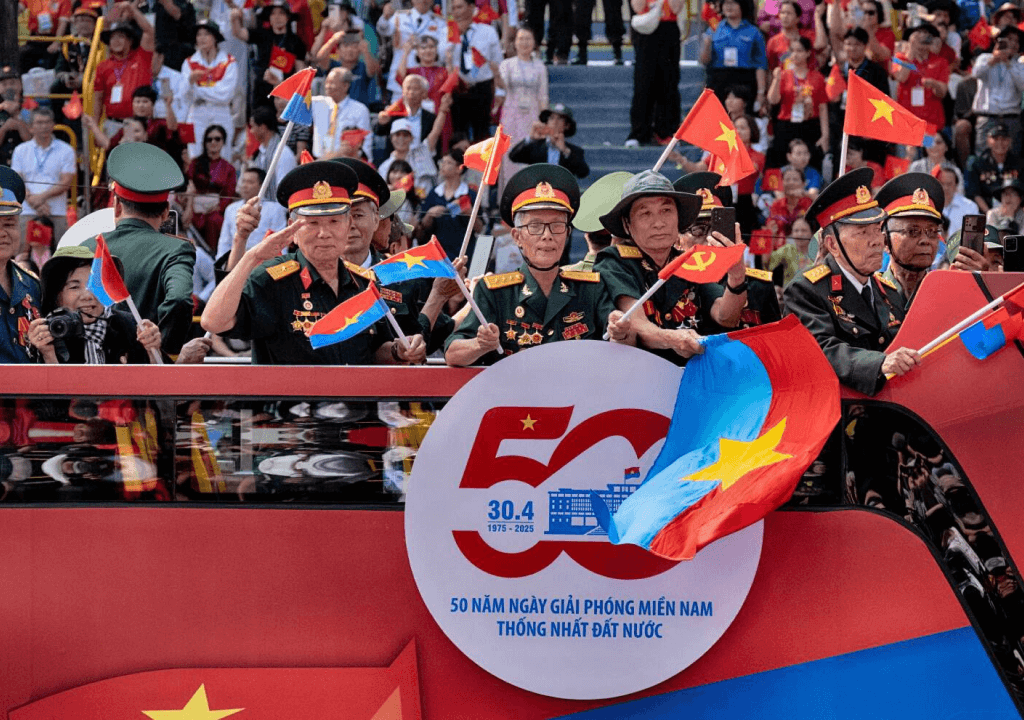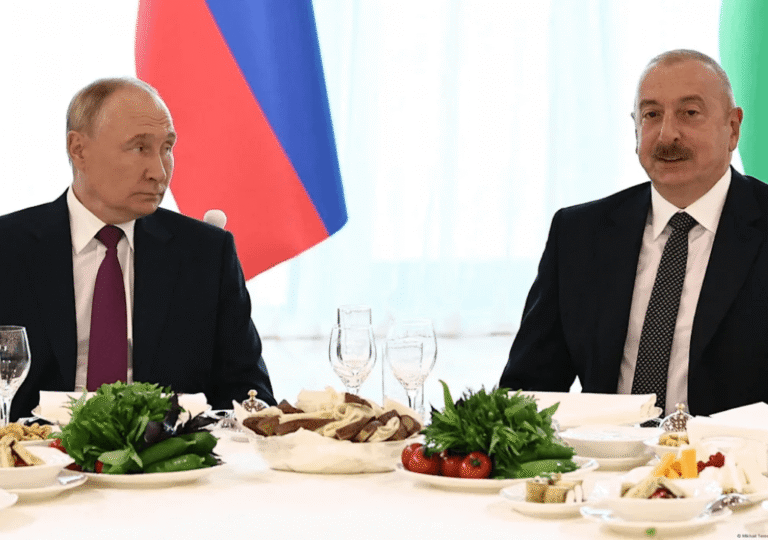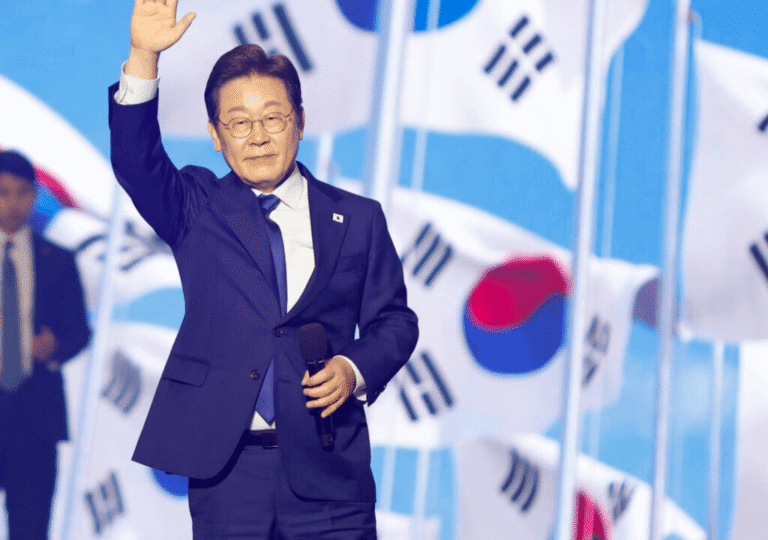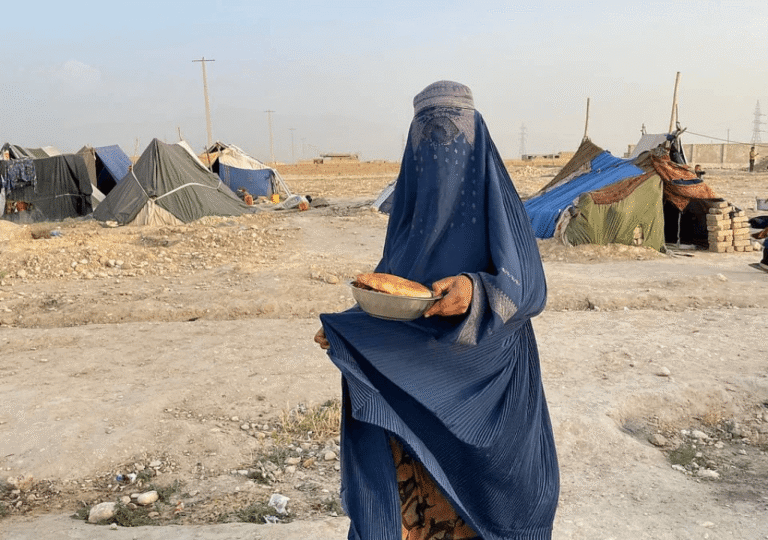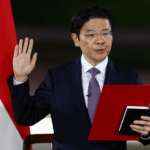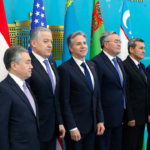It remains one of the most iconic narratives of modern history—a true David and Goliath struggle. The formidable United States was ultimately brought to a halt by a small Southeast Asian nation still emerging from the long shadows of colonization. The Vietnam War has come to symbolize the power of popular resistance against imperialism. Decades later, on April 30th, 2025, thousands of Vietnamese gathered to commemorate the 50th anniversary of the war’s end.
The occasion marks a pivotal chapter in Vietnam’s history: the fall of Saigon on April 30, 1975, when Communist North Vietnam captured the capital of the U.S.-backed South. It was the first step toward national reunification, arriving two years after the withdrawal of the last American combat troops. The war’s end brought closure to a brutal 20-year conflict that claimed the lives of some 3 million Vietnamese and nearly 60,000 Americans—many of them young conscripts sent to fight a distant and devastating war.
Vietnam: The New China
Vietnam increasingly mirrors China in its trade practices, political structure, and aspects of its cultural development. This resemblance is no coincidence. Over the years, Vietnam has adopted key elements of China’s state-led development model while maintaining close ties between the ruling Communist parties of both nations. These relations remain strong today, despite a shared history marked by ideological fractures and armed conflict.
During the Sino-Soviet split, Vietnam initially attempted to balance its alliances with both Moscow and Beijing. However, internal divisions surfaced, and a pro-Soviet faction led by Lê Duẩn eventually prevailed—particularly after China began normalizing relations with the United States, a move Hanoi saw as a betrayal of revolutionary solidarity. The rivalry between the two communist nations eventually escalated into open war.
Following the collapse of the Soviet Union, Vietnam began rebuilding its relationship with China. Over the decades, cooperation deepened in areas such as trade, infrastructure, and governance. Vietnam’s development trajectory began to echo China’s—with rapid industrialization, a centralized one-party system, and increasing integration into global supply chains.
Still, significant obstacles persist. Historical animosities, ongoing maritime disputes in the South China Sea, and economic tensions—particularly the flood of cheap Chinese imports—continue to strain the relationship. These challenges have pushed Vietnamese leaders to diversify the country’s foreign partnerships and reduce overreliance on any single power.
Despite underlying friction, symbolic displays of unity continue. At a recent ceremony commemorating Vietnam’s struggle for independence, 118 Chinese troops marched alongside Vietnamese forces—a gesture that underscored both the enduring camaraderie and the lingering complexity of relations between the two communist neighbors.
The Tricky Relationship With the U.S.
The scars of war have largely healed, and the relationship between the U.S. and Vietnam is no longer hostile, despite the immense damage the conflict caused to Vietnam. Today, Vietnam is a manufacturing powerhouse and holds a deep admiration for the U.S. economy. Politically, though, it does not fully align with the United States, even as both nations share common interests in the South China Sea.
Vietnam and the United States formalized diplomatic ties in 1995, marking a significant shift two decades after the war. Yet it was in 2023, during a visit to Hanoi by former President Joe Biden, that their relationship truly blossomed, as Biden’s evident focus on Vietnam heralded a new chapter. What had been a promising partnership, however, now stands at a precarious juncture, threatened by the specter of a punishing 46% tariff on Vietnamese goods, imposed by Biden’s successor, Donald Trump, in April.
The tariffs have been largely suspended until July, with talks ongoing. However, if enacted, they could undermine Vietnam’s export-driven growth, which has attracted significant foreign investment. To show goodwill, Washington sent Susan Burns, the U.S. consul general in Ho Chi Minh City, to represent the country at the parade. Both nations are striving to repair their ties, acknowledging the challenges but also the opportunities ahead.
To Be a Friend to All, but close to none
Vietnam now positions itself as a friend to all, while remaining ideologically anchored in communism. When faced with punitive tariffs, it has taken a pragmatic path—unlike some other communist states. Instead of responding aggressively to recent U.S. tariff threats, which pose a serious risk to its export-driven economy, Vietnam chose diplomacy, sending officials to Washington for negotiations. This is the new Vietnam—independent, practical, and no longer simply following China’s lead.
China is working to keep Vietnam within its sphere of influence. President Xi Jinping’s visit to Hanoi was a calculated effort to reaffirm ties and ensure Vietnam’s actions do not stray from Beijing’s interests. The Chinese Communist Party remains committed to its relationship with Vietnam’s ruling party, despite past conflicts and ongoing mistrust. Yet Vietnam continues to assert its own identity.
Beyond its ties with China and the U.S., Vietnam is also expanding its relations with European nations. High-level officials from countries like Germany now make frequent visits, reflecting deepening partnerships. Vietnam plays an active role in ASEAN as well, positioning itself as one of the bloc’s most engaged and forward-looking members.
Moreover, Vietnam is deepening economic ties with other emerging powers like India, a vast and growing market, as it works to diversify trade and avoid overreliance on any one partner. Through it all, Vietnam remains distinctly itself—firmly rooted in history, yet increasingly global in outlook.

